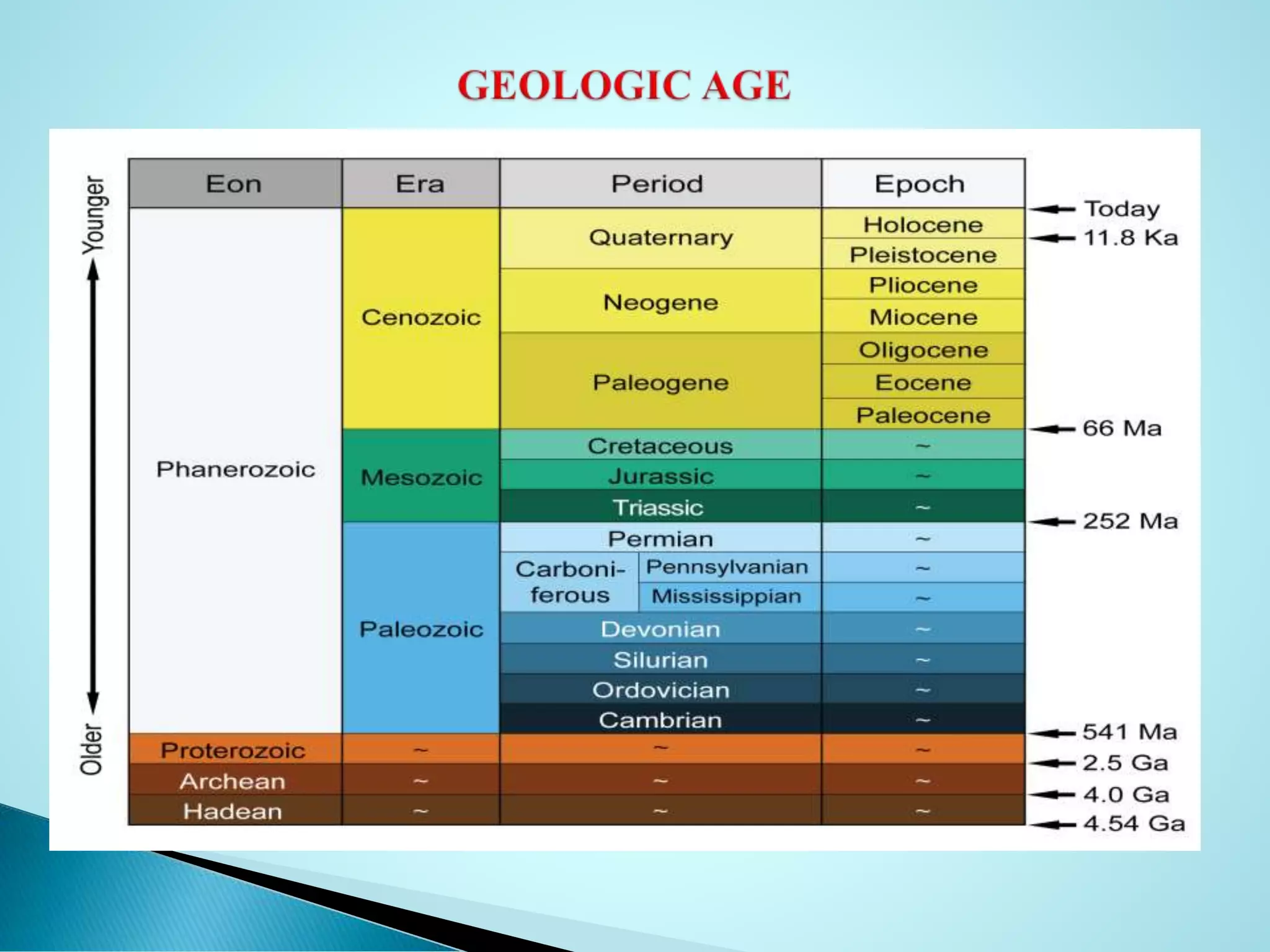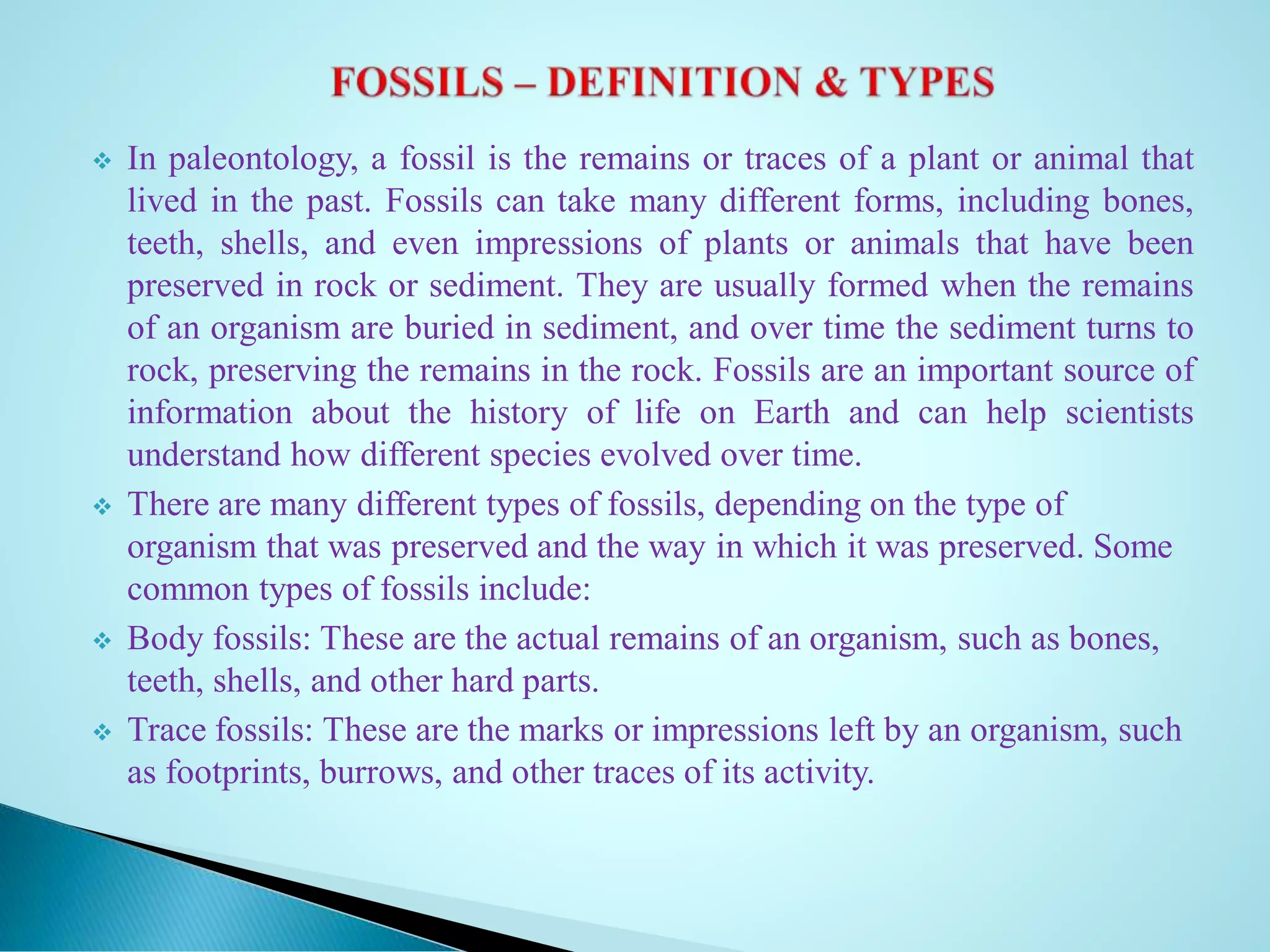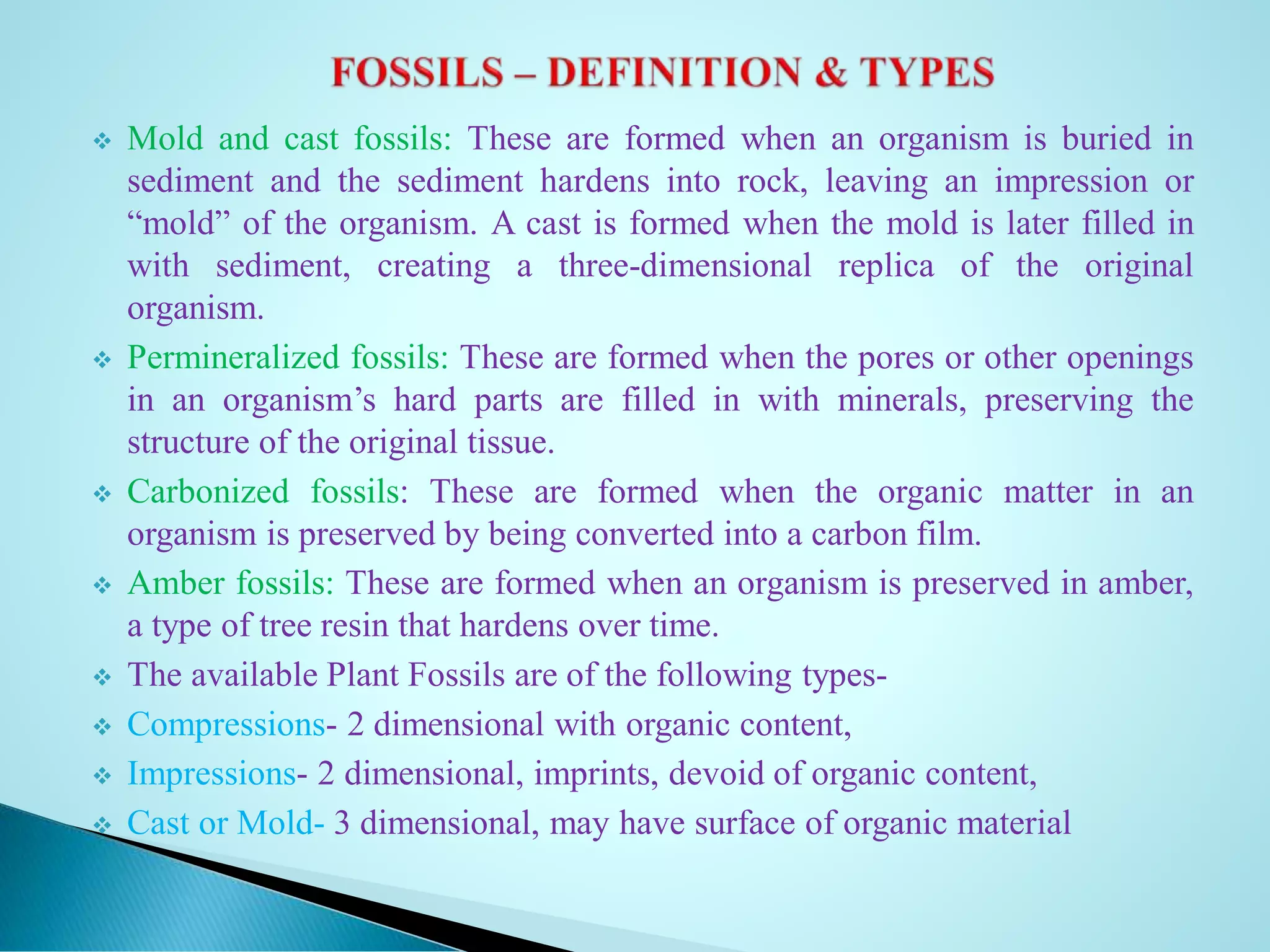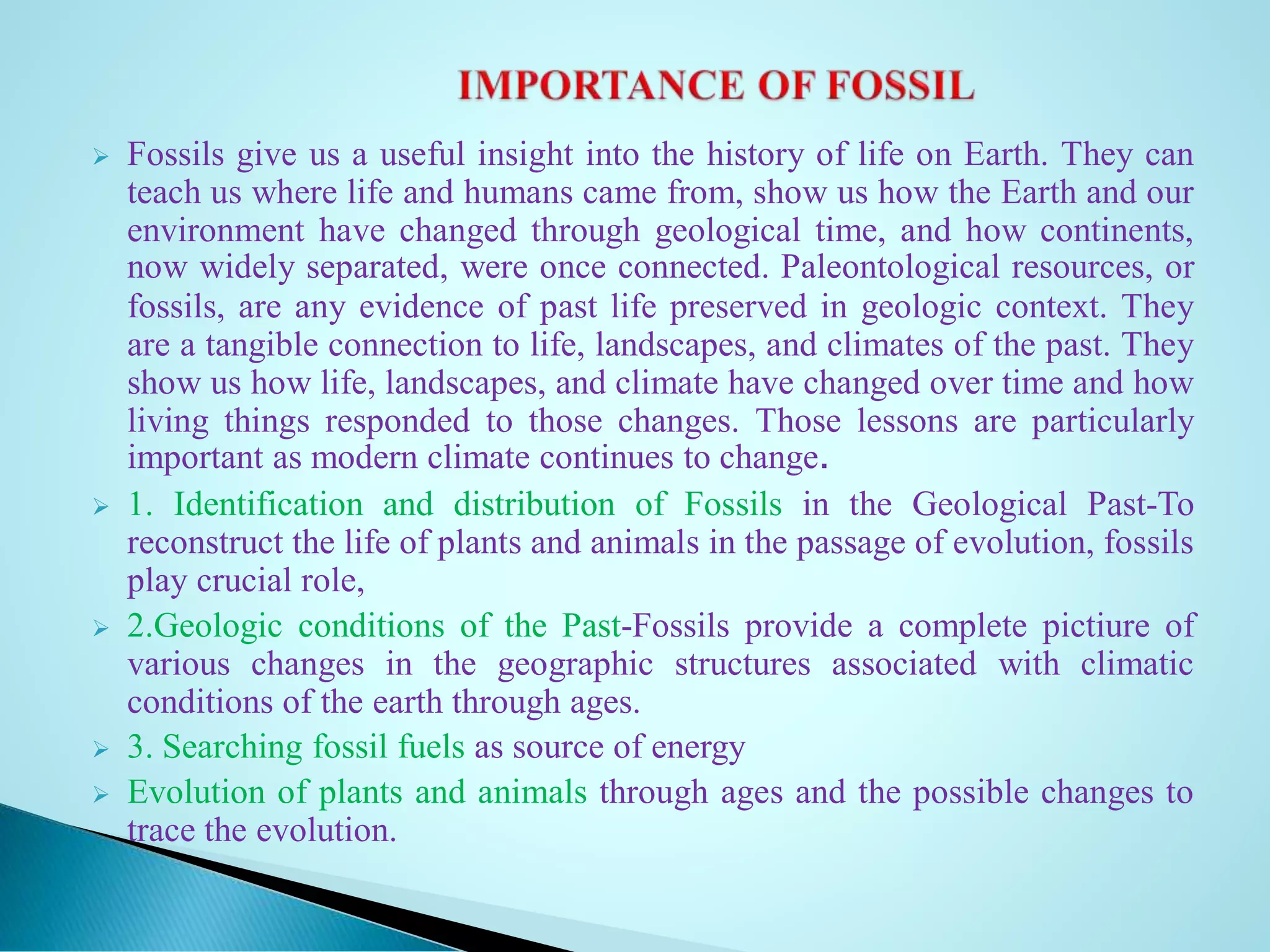Fossils provide important information about past plant and animal life on Earth. They form through a process called fossilization when remains become buried in sediment and over time the sediment hardens into rock, preserving the remains. There are many types of fossils including body fossils, trace fossils, molds/casts, and carbonized or permineralized fossils. The geological time scale maps Earth's history in distinct periods based on fossils and rock layers. Key periods include the Paleozoic, Mesozoic, and Cenozoic eras. Fossils are important for understanding evolution and how life has changed over geological time.
























